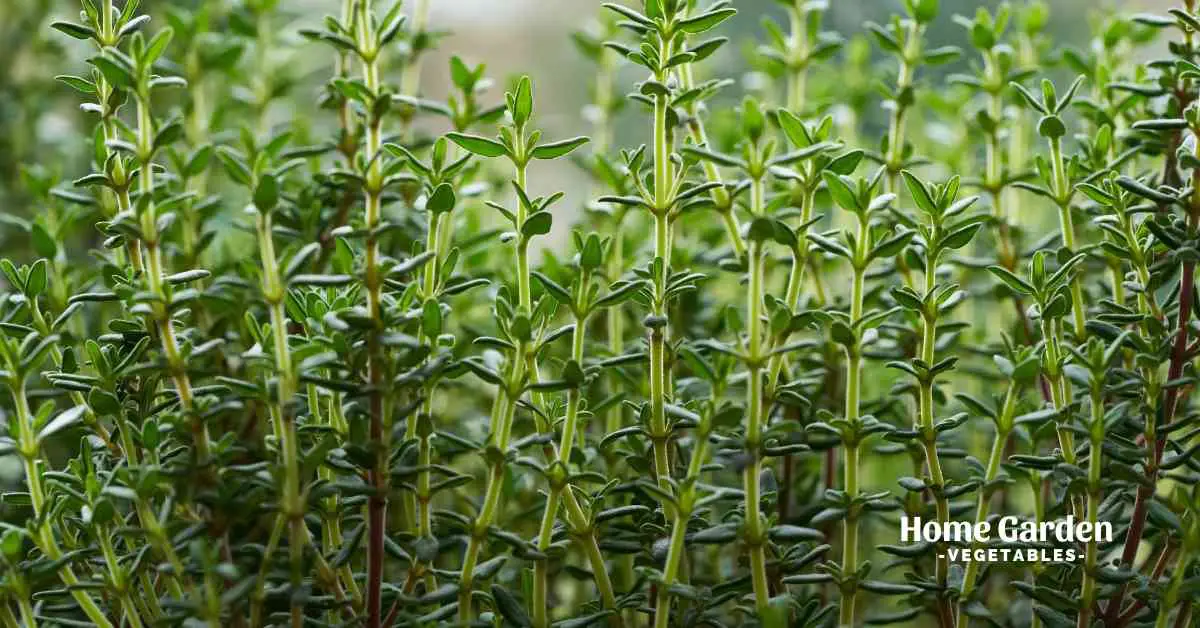Many herbs can be quickly grown indoors with little effort, and thyme is one of them. This hardy herb can be started from seed, cuttings, or divisions and doesn’t require much care or attention. This fragrant herb is easy to grow and adds a delicious touch to any dish.
Once established, thyme is quite drought-tolerant and can handle a bit of neglect. It’s the perfect herb for busy people who don’t have much time for gardening. Thyme is a versatile herb that can be used in many different dishes.
Reader Poll: What online courses would interest you?
It has a slightly lemony flavor that goes well with poultry, fish, and vegetables. It can also be used to make delicious herbal tea. If you’re looking for an easy-to-grow herb that can be used in various ways, thyme is a great choice.
Where to plant Thyme
Thyme is a versatile herb used in various dishes, from savory to sweet. But before enjoying its flavor, you need to know where to plant it. Thyme prefers full sun and well-drained soil. It’s an excellent idea to Amend the ground with some organic matter before planting to help retain moisture.
Thyme is drought tolerant, but it will produce more flavor if it’s watered regularly. Once you’ve found the perfect spot for your thyme, you can either start it from seed or buy young plants from a nursery. If you’re starting from seed, sow the seeds indoors about eight weeks before the last frost date.
Subscribe to our newsletter!
Once they’ve germinated, transplant them outdoors. If you’re buying young plants, wait until after the last frost date to plant them. With some care, your thyme will thrive and provide delicious herbs for your kitchen.
Soil Requirements for Growing Thyme
Thyme is a perennial herb that is part of the mint family. It is native to the Mediterranean region and is commonly used as a seasoning herb in cooking. Thyme can also be used for medicinal purposes.
Thyme prefers to grow in well-drained, sandy soil with a pH between 6.0 and 8.0. It is a drought-tolerant plant and can be grown in full sun or partial shade. Thyme is a low-maintenance plant and does not require much fertilizer. However, it is essential to keep the soil moist, especially during the hot summer months. Thyme needs well-drained soil and does not tolerate wet or soggy conditions. When grown in containers, thyme should be fertilized every two weeks with a balanced liquid fertilizer.
If you are growing thyme for culinary purposes, harvesting the leaves just before the plant flowers are best. You can dry or freeze the leaves for later use.
Water Requirements for Growing Thyme
Water is essential for the growth of any plant, and thyme is no exception. This hardy herb requires at least 1 inch of water per week and more during hot, dry weather.
Thou can water thyme plants with a sprinkler or drip system or by hand with a hose or watering can. Be careful not to over-water, as this can lead to root rot. Allow the soil to dry out slightly between waterings.
Does a thyme plant need sun or shade?
A thyme plant needs sun or shade depending on the variety of thyme. Common thyme (Thymus vulgaris) and lemon thyme (Thymus citriodorus) grow best in full sun, while woolly thyme (Thymus pseudolanuginosus) and caraway thyme (Thymus Herba-Barona) prefers partial shade.
A thyme plant needs full sun to grow properly. If it does not get enough sun, it will not produce as much oil, which gives thyme its flavor. Thyme also needs well-drained soil. If the soil is too wet, the plant will rot.
If you live in an area with hot summers, thyme is an excellent plant in your garden. It can be used as a culinary herb, in essential oils, and as an ornamental plant.
Taking care of Thyme Plant
Thyme is a drought-tolerant herb that is easy to take care of. It can be grown in the ground or in containers and doesn’t require much water. Thyme can be used fresh or dried and is a versatile ingredient in many dishes.
To dry thyme, cut the stems and hang them upside down in a dark, dry place. When the thyme is dry, strip the leaves from the stems and store them in an airtight container.
Where does thyme grow best?
Thyme is a perennial herb that is part of the mint family. It is native to the Mediterranean region and has been used since ancient times for its culinary and medicinal properties. Thyme grows best in full sun and well-drained soil.
It is a drought-tolerant plant that does not require much watering. Thyme can be propagated from seed, cuttings, or division. It is a low-maintenance plant that does not need much fertilizer.
Harvesting Thyme
Harvesting thyme is a simple but essential process to ensure that this herb is at its peak flavor. The best time to harvest thyme is early morning after the dew has evaporated but before the sun gets too hot. Cut off the stems with a sharp knife, careful not to damage the leaves.
Hang the stems upside down in a cool, dry place until the leaves are dehydrated. Once dry, strip the leaves from the stems and store them in an airtight container. Thyme can be used fresh or dried and will keep for several months.
Conclusion
After careful consideration, we have concluded that growing thyme is a great idea! The herb is not only fragrant and flavorful, but it is also easy to grow and care for.
Plus, it has several health benefits that make it a worthwhile addition to any garden. So, if you’re looking for an herb that is both delicious and good for you, then thyme is a perfect choice!

